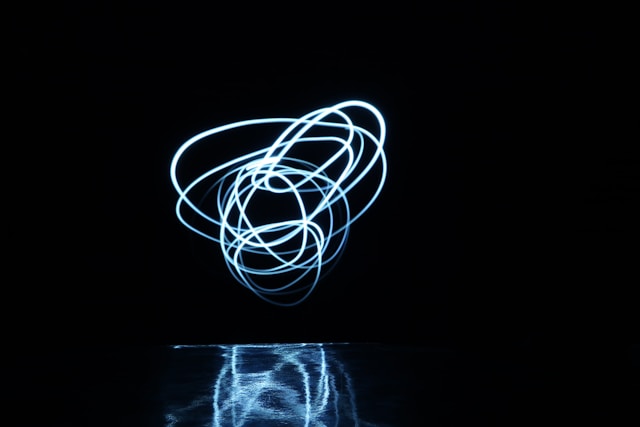|
|
How Creative Expression Supports Deep Emotional Healing
Inside every adult lives a child—the version of ourselves shaped by early experiences, emotions, and unmet needs. For many, this inner child still bears the scars of the past. These unresolved feelings can show up in adulthood as anxiety, low self-worth, perfectionism, or difficulty with relationships.
Healing the inner child is a powerful part of emotional recovery. One of the most effective tools for this process is art therapy. Through drawing, painting, and creative play, we access parts of ourselves that words alone often can’t reach. Art therapy provides a safe and nurturing space to reconnect, express, and soothe the tender places within.

Photo by Izabel 🏳️🌈 on Unsplash
What Is the Inner Child?
The inner child represents the emotional and developmental aspects of our younger selves. It includes the joy, creativity, and wonder we experienced—but also the pain, fear, or neglect we may have internalised.
When our inner child feels unseen or unheard, it can create patterns like:
– Emotional reactivity or outbursts
– Chronic shame or self-criticism
– Fear of abandonment
– Overachievement or people-pleasing
– Trouble setting boundaries
Healing the inner child involves listening with compassion, meeting unmet needs, and creating new, healthier ways of being.
Why Art Therapy Works for Inner Child Healing
Art therapy is a therapeutic process that uses visual expression to support emotional healing. It’s not about being a skilled artist—it’s about letting creativity guide you into self-discovery and self-compassion.
Here’s why art therapy is such a powerful tool for healing the inner child:
1. It Accesses the Subconscious Mind
Much of our early emotional wounding lives below conscious awareness. Art bypasses the thinking mind and helps us express feelings we might not be able to verbalise.
📖 A 2019 review in Frontiers in Psychology found that art therapy activates non-verbal parts of the brain, helping individuals access deeper emotions and trauma that may be difficult to articulate (Haeyen et al., 2019).
2. It Encourages Play and Safe Exploration
Children process their world through play and creativity. By drawing, painting, or sculpting, we return to that natural mode of exploration. This helps build trust and safety with the inner child, allowing emotional expression without judgment.
3. It Helps Externalise Inner Emotions
Art allows us to take internal feelings and place them on paper. This makes it easier to examine emotions with compassion, rather than being overwhelmed by them. It also validates the inner child’s experience: “What you feel matters. I see you.”
Art Therapy Techniques for Inner Child Healing
You don’t need a therapist to get started, though working with a certified art therapist can deepen the process. Here are simple ways to begin using art to heal your inner child:
1. Draw Your Inner Child
Take a moment to close your eyes and imagine yourself at age 5–8. What were you wearing? What expression is on your face? Then, draw this version of yourself. Use crayons or markers to connect with the feeling of being a child.
Ask yourself afterwards:
– What does this child need?
– What emotions came up while drawing?
2. Write and Illustrate a Letter
Write a letter from your adult self to your inner child. Then decorate it with colours, symbols, or images that feel nurturing. You might say:
> “Dear little me, I’m so proud of how strong you were. I’m here now to keep you safe.”
This practice blends writing with creative expression, helping build trust between your present and past selves.
3. Create a Safe Place Collage
Using old magazines, scissors, and glue, create a collage of images that feel safe, joyful, or comforting. Let this represent a “safe space” for your inner child to return to whenever needed.
You can hang it in your room as a visual reminder that safety and comfort are always available.
4. Paint Emotions as Colours or Shapes
Instead of naming your emotions, paint them. What colour is your sadness? What shape is your fear? This helps you feel emotions fully without judgment, offering a gentle release for stored feelings.
The Science Behind It
Art therapy isn’t just creative—it’s supported by research:
📖 A study in Arts & Health found that participants engaging in expressive art experienced significant reductions in depression, anxiety, and trauma-related symptoms (Stuckey & Nobel, 2010).
📖 Another study in The Arts in Psychotherapy showed that art-making for just 45 minutes lowered cortisol (stress hormone) levels, supporting emotional regulation and relaxation (Kaimal et al., 2016).
Words of Care
It’s natural to feel vulnerable during inner child work. If sadness, anger, or unexpected memories arise, pause and breathe. Offer yourself the kindness you would give a child: “It’s okay. I’m here. You’re safe now.”
Remember, healing doesn’t happen in one session—it happens in small moments of connection over time. Art therapy is not about fixing the past, but honouring it with compassion and creativity.
Final Thoughts
Your inner child doesn’t need perfection. They need presence. They need to know that someone finally sees them—and that someone is you.
Art therapy offers a gentle, colourful doorway into that connection. With every line, colour, and image, you offer your younger self a healing message: “You matter. You are loved. You are no longer alone.”
And that’s the beginning of deep, lasting emotional freedom.
References
– Haeyen, S., van Hooren, S., van der Veld, W., & Hutschemaekers, G. (2019). Measuring the impact of art therapy on emotion regulation in adults with mental health disorders. Frontiers in Psychology, 10, 1531.
– Stuckey, H. L., & Nobel, J. (2010). The connection between art, healing, and public health. Arts & Health, 2(1), 2–13.
– Kaimal, G., Ray, K., & Muniz, J. (2016). Reduction of cortisol levels and participants’ responses following art making. The Arts in Psychotherapy, 45, 57–64.


1 Comment
Pingback: Utilizing Artwork Remedy for Therapeutic the Internal Youngster. – olive-eel-337387.hostingersite.com